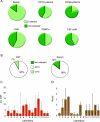A consensus protocol for the standardization of cerebrospinal fluid collection and biobanking
- PMID: 19949037
- PMCID: PMC2839806
- DOI: 10.1212/WNL.0b013e3181c47cc2
A consensus protocol for the standardization of cerebrospinal fluid collection and biobanking
Abstract
There is a long history of research into body fluid biomarkers in neurodegenerative and neuroinflammatory diseases. However, only a few biomarkers in CSF are being used in clinical practice. One of the most critical factors in CSF biomarker research is the inadequate powering of studies because of the lack of sufficient samples that can be obtained in single-center studies. Therefore, collaboration between investigators is needed to establish large biobanks of well-defined samples. Standardized protocols for biobanking are a prerequisite to ensure that the statistical power gained by increasing the numbers of CSF samples is not compromised by preanalytical factors. Here, a consensus report on recommendations for CSF collection and biobanking is presented, formed by the BioMS-eu network for CSF biomarker research in multiple sclerosis. We focus on CSF collection procedures, preanalytical factors, and high-quality clinical and paraclinical information. The biobanking protocols are applicable for CSF biobanks for research targeting any neurologic disease.
Figures

References
-
- Deisenhammer F, Bartos A, Egg R, et al. Guidelines on routine cerebrospinal fluid analysis: report from an EFNS task force. Eur J Neurol 2006;13:913–922. - PubMed
-
- Bielekova B, Martin R. Development of biomarkers in multiple sclerosis. Brain 2004;127:1463–1478. - PubMed
-
- Teunissen CE, Dijkstra CD, Polman CH. Biological markers in CSF and blood for axonal degeneration in multiple sclerosis. Lancet Neurology 2005;4:32–41. - PubMed
-
- Plebani M. Errors in clinical laboratories or errors in laboratory medicine? Clin Chem Lab Med 2006;44:750–759. - PubMed
-
- Reiber H. Dynamics of brain-derived proteins in cerebrospinal fluid. Clin Chim Acta 2001;310:173–186. - PubMed
Publication types
MeSH terms
Substances
Grants and funding
LinkOut - more resources
Full Text Sources
Other Literature Sources
